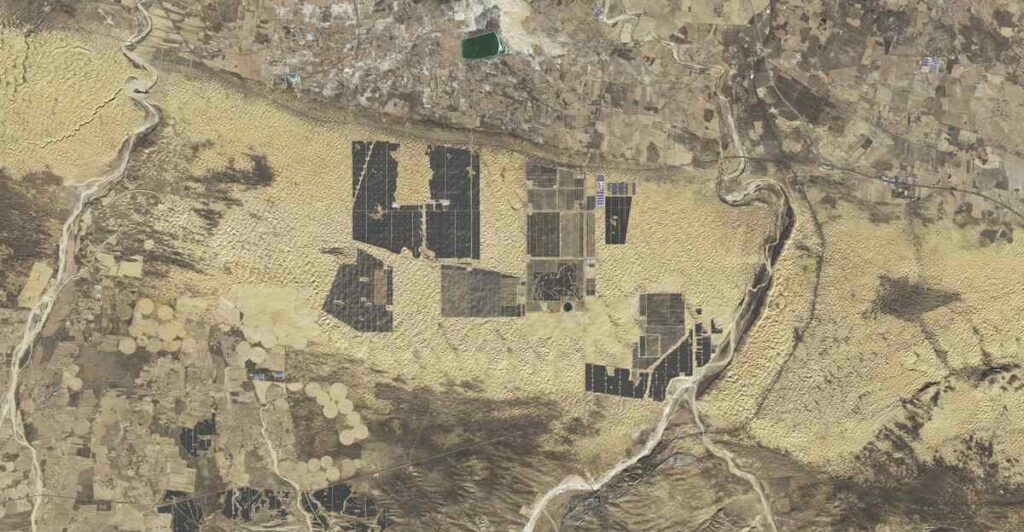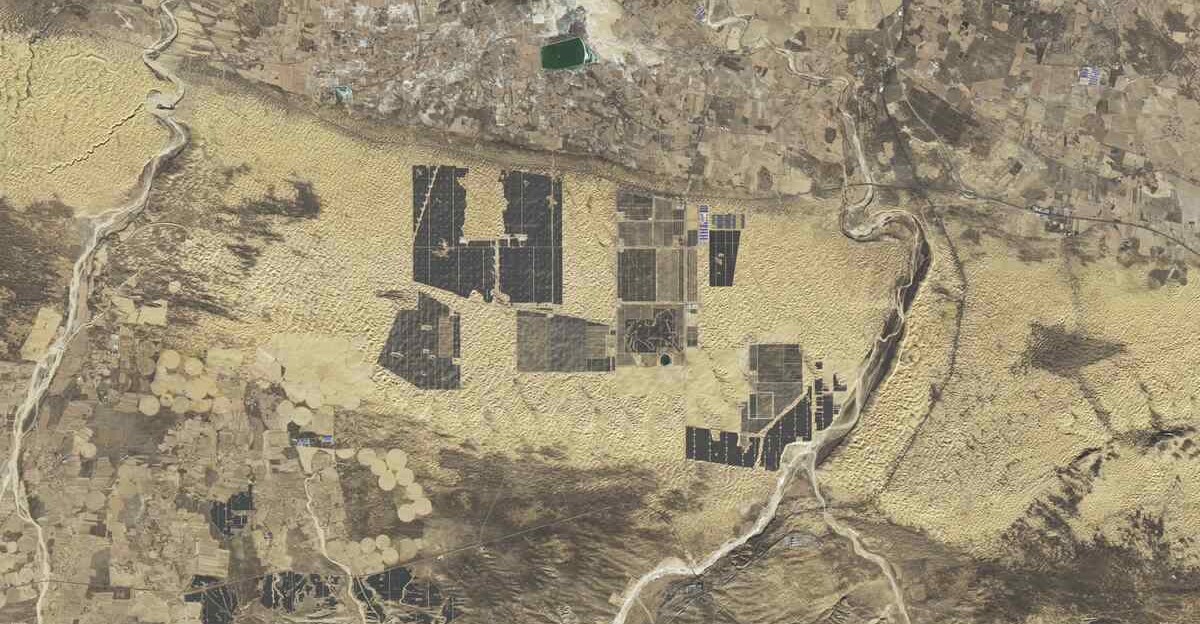 The solar arrays at the Kubuqi Desert, 2024 – credit: NASA’s Earth Observatory.
The solar arrays at the Kubuqi Desert, 2024 – credit: NASA’s Earth Observatory.
Renewable energy sources like solar and wind produced more electricity during the first half of the year than any other energy resource, including coal.
To bullet another massive accomplishment in the clean energy transition, of the cumulative demand for new power worldwide, renewables met 100% of it.
Coal has been the world’s most-consumed energy resource for the last 50-and-a-bit years. It held that position up until last year. But with costs in the solar energy market falling 99.9% since 1975, it’s becoming so much more feasible to use as an energy source for low and middle-income countries.
China continued its full-throttle deployment of renewable energy resources, adding more clean energy than the whole world combined last year, reducing its fossil fuel consumption by 2% even as it adds to its fleet of coal power plants.
This data comes from the energy think tank Ember, whose senior analyst Malgorzata Wiatros-Motyka said 2025 marked “the beginning of a shift where clean power is keeping pace with demand growth.”
Most solar generation (58%) is now in lower-income countries. Now that solar power in particular is cheaper, it’s much faster to install new grid capacity at scale rather than investing in the 10, 20, 30-year time horizons that the financing and construction of thermal power plants require.
Most countries don’t produce fossil fuels, but all have access to the Sun and winds, and so by relying on renewable energy they’re also not required to enter foreign currency markets to then be able to import coal, oil, or natural gas.
“Pakistan, for example, imported solar panels capable of generating 17 gigawatts (GW) of solar power in 2024,” writes the BBC on that notion, “double the previous year and the equivalent of roughly a third of the country’s current electricity generation capacity.”
MORE STORIES LIKE THIS: A Desert Full of Power: Gargantuan Solar Array 250-Miles Long to Power Beijing
South Africa, Algeria, and Botswana have all taken advantage of the solar boom as well.
Wind turbines and associated infrastructure have not come down in price anywhere near as much as solar, which likely presents headwinds to so-called “Wind Belt” nations like the UK and Norway.
BRIGHTEN Up Social Media With The Triumph Of Renewables…

